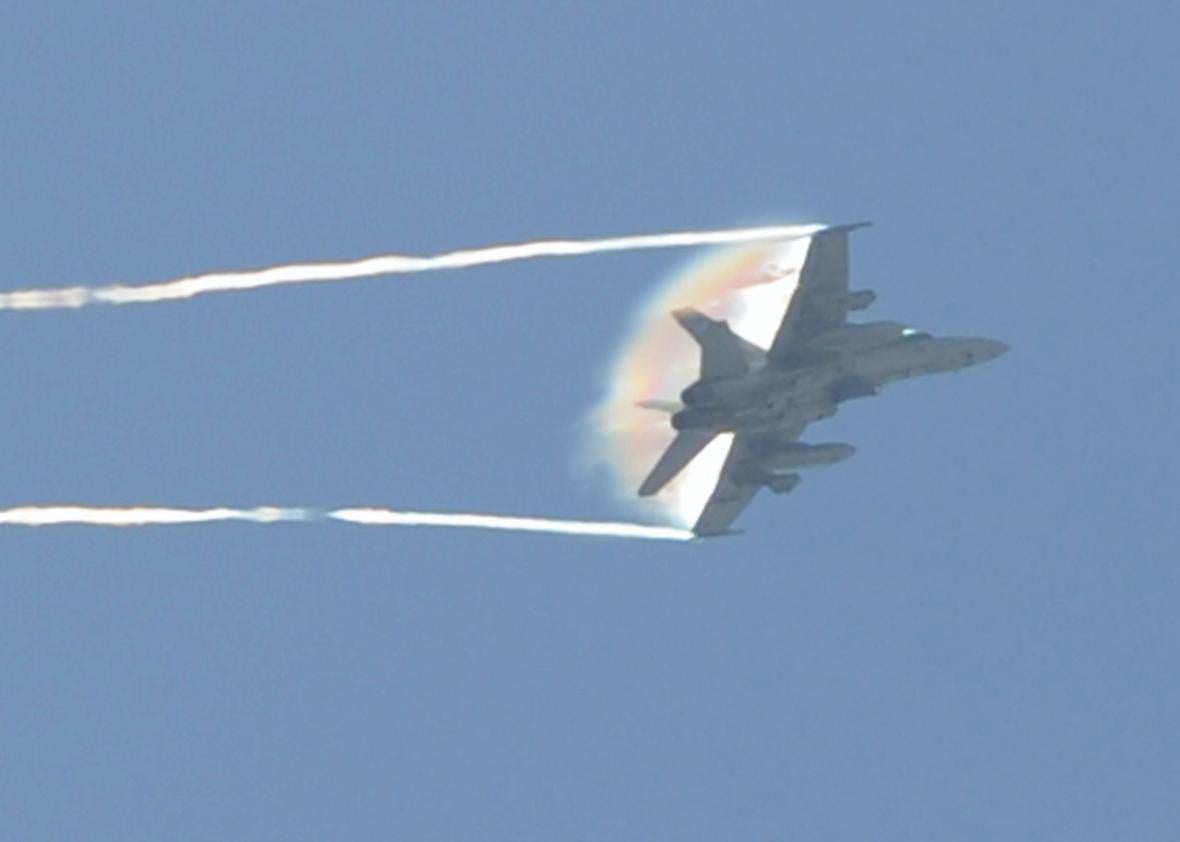This question originally appeared on Quora, the knowledge-sharing network where compelling questions are answered by people with unique insights. You can follow Quora on Twitter, Facebook, and Google Plus.
Answer by Tim Hibbetts, F/A-18C pilot:
Sometimes you wake up, sometimes you don’t. It can take several seconds to regain full function. If the aircraft is not far enough away from the ground when the lone pilot comes around, all his worries are over. It’s likely the same outcome if you start napping in the middle of a fight.
If quickly deprived of oxygen, the brain has about five seconds of useful consciousness. That’s generally enough to let go of the stick if you know what’s coming. But if you have rapid-G onset, which most modern fighters are capable of delivering, you can be unaware you’ve just put the brain’s blood reserves in a back pocket. When this happens, G-force–induced loss of consciousness, or G-LOC, occurs.
If you haven’t yanked on the pull, there are times when you can experience the various stages up to G-LOC and let up on the stick pressure to keep from entering sleepy time. The tunnel vision, loss of color vision, sparkly peripheral vision, and a few others are good indicators that you’re at the edge. That next step, black out, is a fine slice between here and not here.
I actually experienced this in centrifuge training. The techs who were running the trainer called it “A-LOC”—almost loss of consciousness. They said they’d never seen anyone get there and come back. The timing with the end of the ride was perfect. Here is a snippet from my training; it’s the last of five or six 10- to 20-second sessions at high-G. For this one, we have to look at a spot over the left shoulder, simulating being in a dogfight. A few seconds after onset, you can see I lose a couple inches of height—having lost the tension in my legs and glutes, which removes the protection that a good strain maneuver can give you. A few seconds later you can see my eyes roll into “confused bovine” mode. I’ve lost all vision, and if the ride doesn’t stop, I’d likely have G-LOC’d. Recovery in this case was quick, as you can tell. The blood surged back, and vision returned almost immediately. He’d asked how much vision I’d lost on each ride, hence my comment, “100 percent.”
Waking up after G-LOC is evidently a soul-shaking experience. Consciousness and vision return before motor control. Even when one is able to move again, there seems to often be a buildup in commands to the limbs that cascade together, causing one to flail around for a second or two, called the “funky chicken.”
My brother-in-law was an instructor in the T-37 Tweet. It’s a side-by-side, two-person jet trainer with enough elevator authority to knock out the unsuspecting student. He recalled several instances where the student would put himself to sleep and the first time, the awakening student caught him in the kisser. After that, he put up both arms in self-protection, saving a few bruises.
There’s a similar term, C-LOC, but it is unrelated to flying. That’s when you get sleepy-tired and have a nap after lunch (chow-induced lack of consciousness).
Correction, March 7, 2016: Due to a photo provider error, this post’s photo caption misidentified the fighter jet as belonging to the Air Force. The F/A-18 is used by the Navy and Marine Corps.
How do fighter pilots handle blacking out due to high-g maneuvers? originally appeared on Quora. More questions on Quora:
